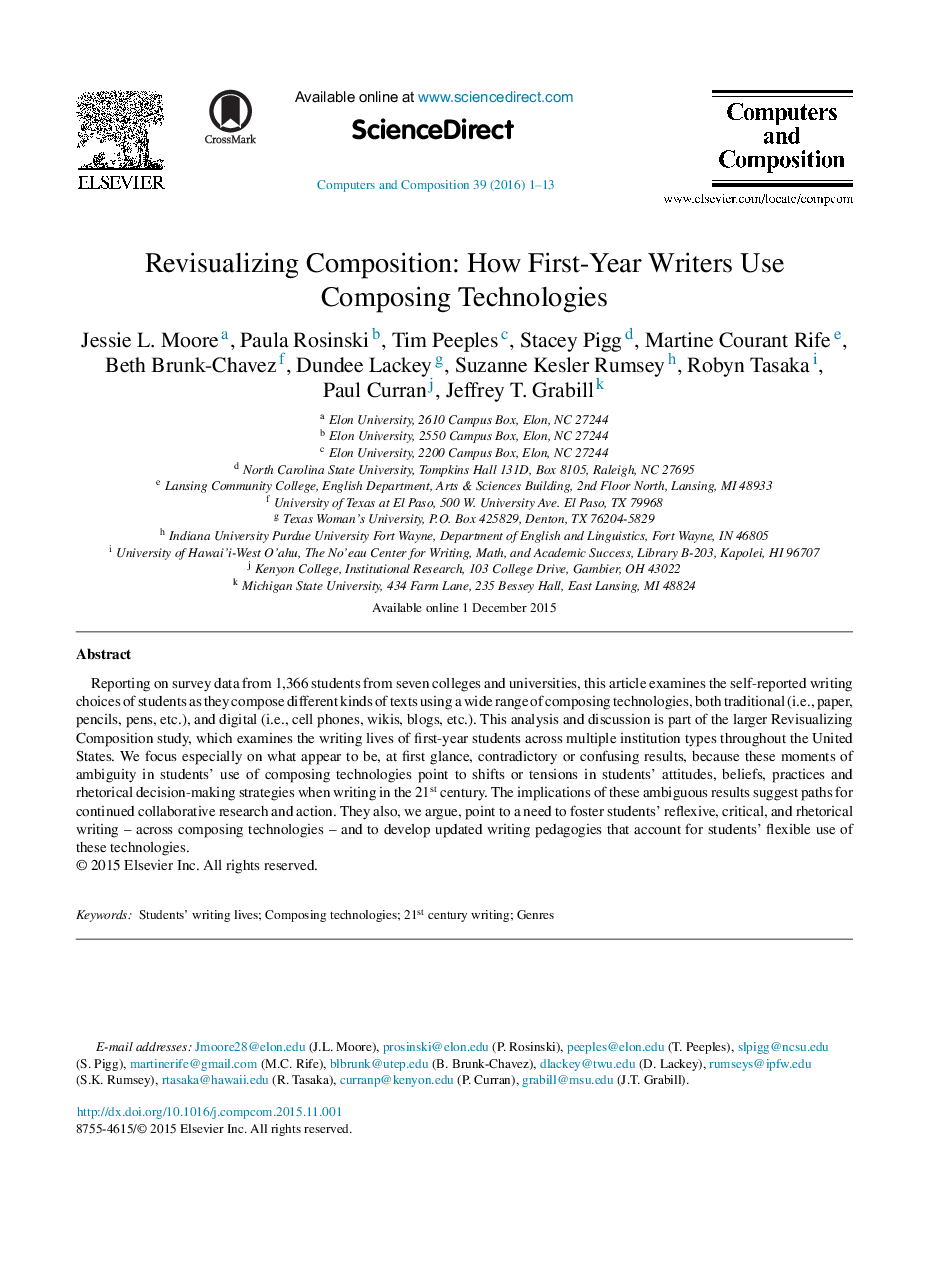| Article ID | Journal | Published Year | Pages | File Type |
|---|---|---|---|---|
| 347679 | Computers and Composition | 2016 | 13 Pages |
Reporting on survey data from 1,366 students from seven colleges and universities, this article examines the self-reported writing choices of students as they compose different kinds of texts using a wide range of composing technologies, both traditional (i.e., paper, pencils, pens, etc.), and digital (i.e., cell phones, wikis, blogs, etc.). This analysis and discussion is part of the larger Revisualizing Composition study, which examines the writing lives of first-year students across multiple institution types throughout the United States. We focus especially on what appear to be, at first glance, contradictory or confusing results, because these moments of ambiguity in students’ use of composing technologies point to shifts or tensions in students’ attitudes, beliefs, practices and rhetorical decision-making strategies when writing in the 21st century. The implications of these ambiguous results suggest paths for continued collaborative research and action. They also, we argue, point to a need to foster students’ reflexive, critical, and rhetorical writing – across composing technologies – and to develop updated writing pedagogies that account for students’ flexible use of these technologies.
